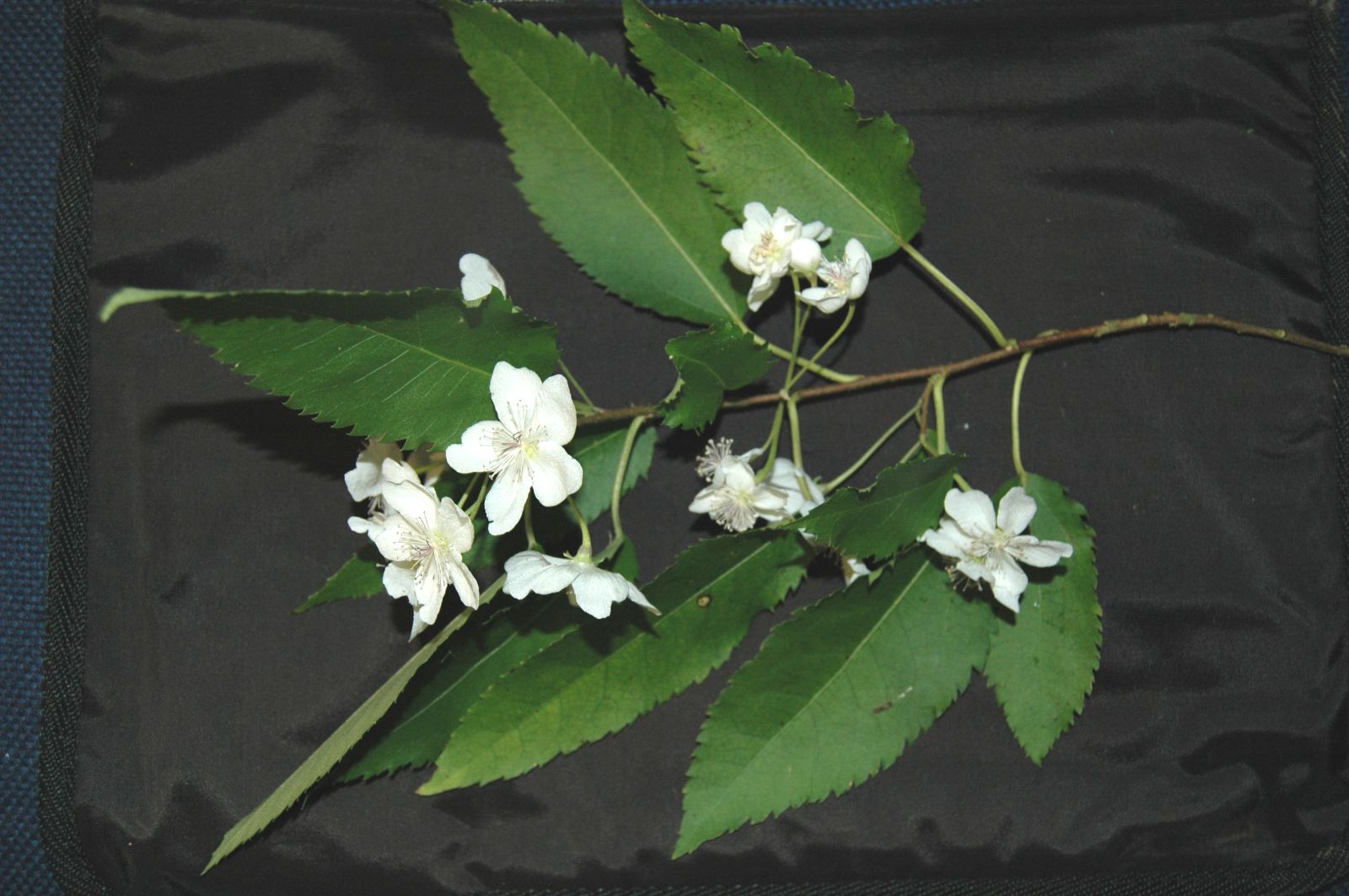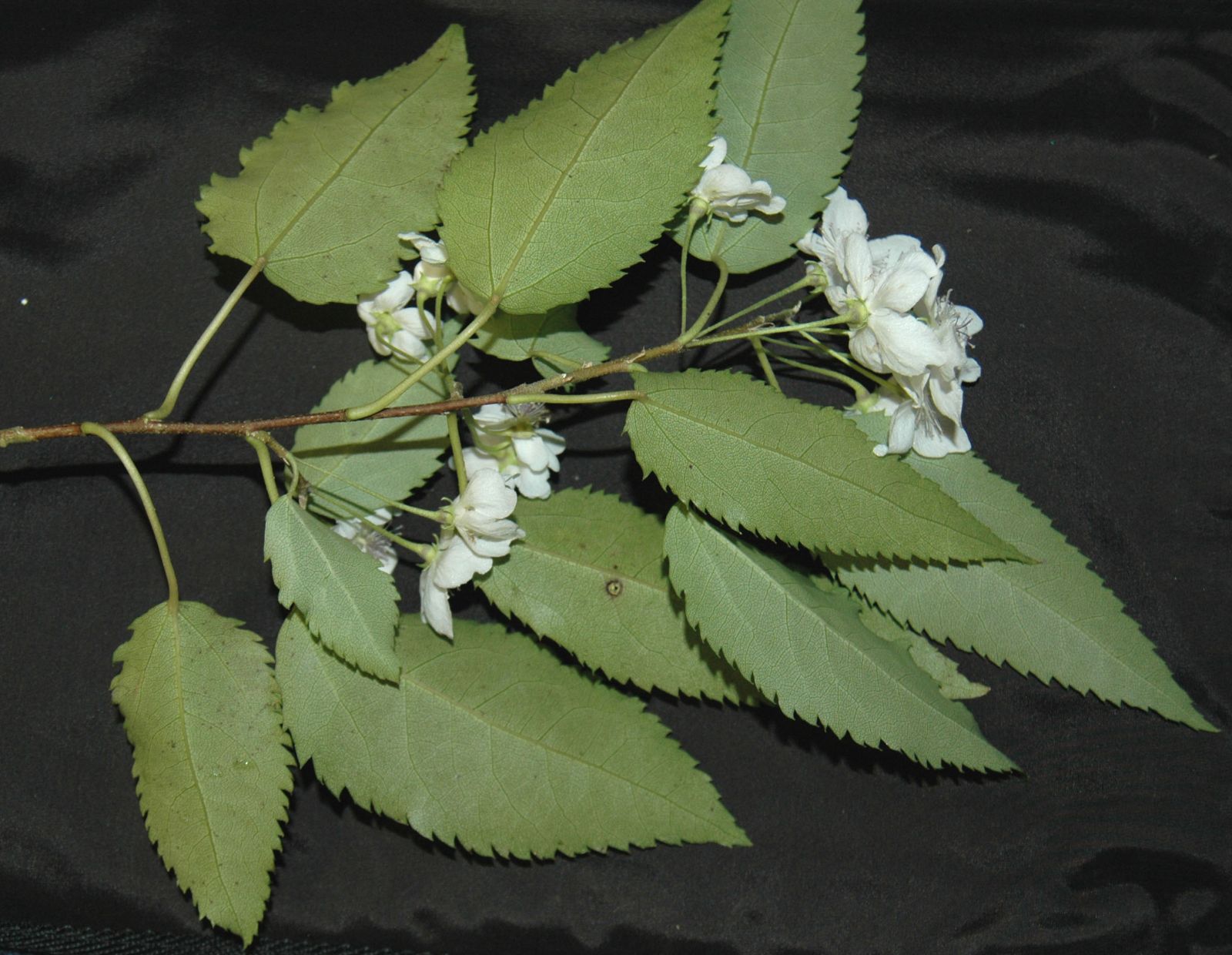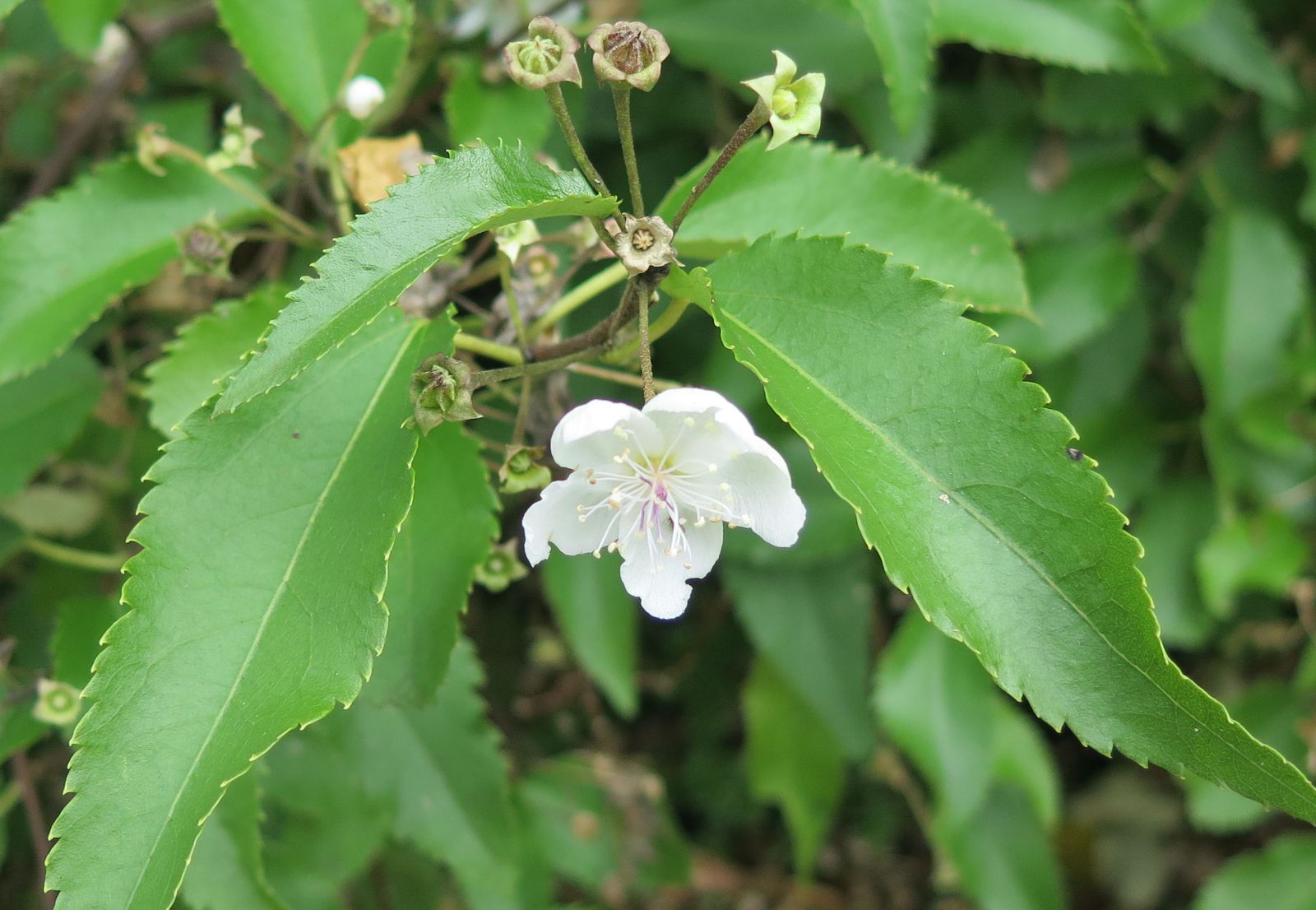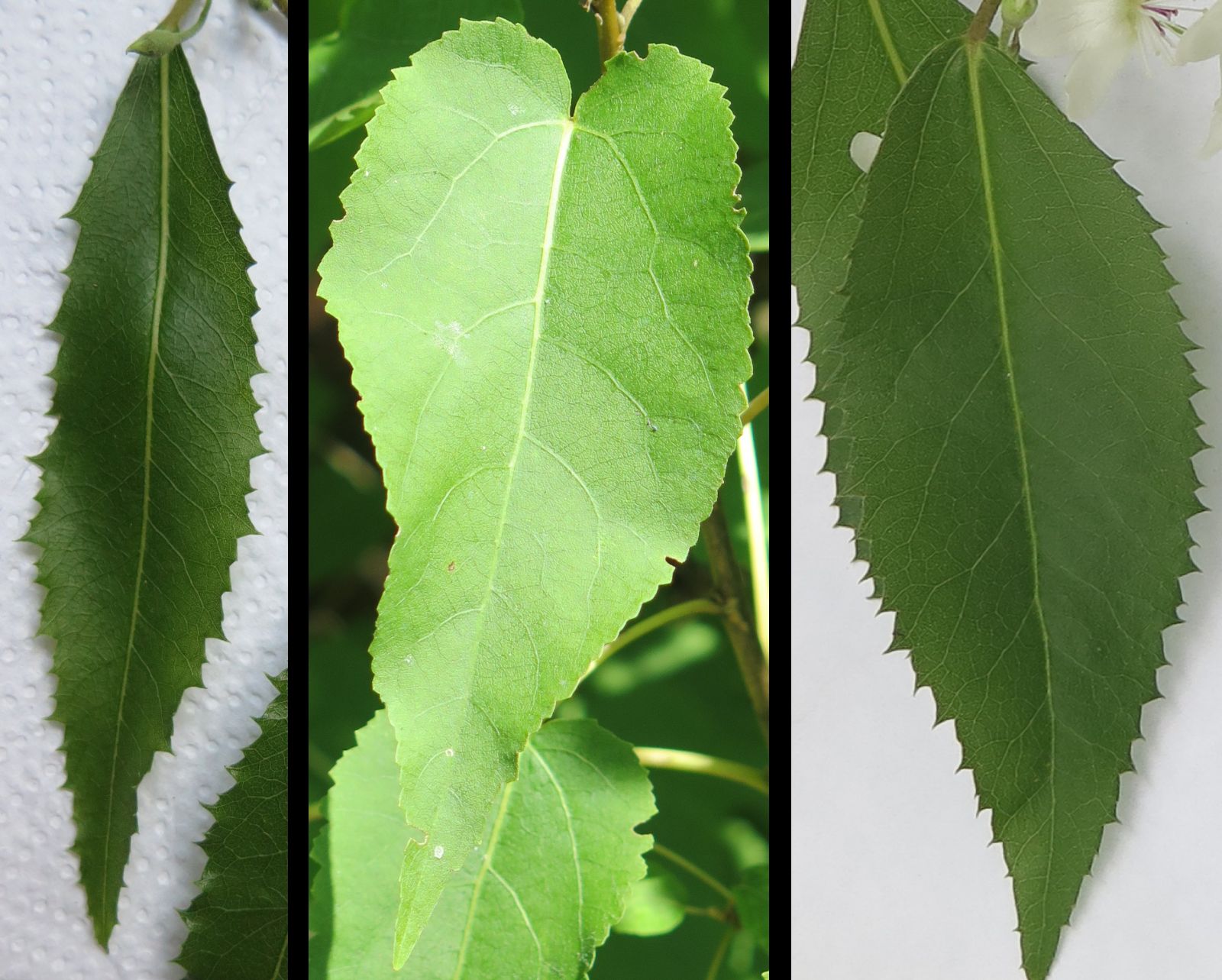Hoheria 'Glory of Amlwch'
Sponsor
Kindly sponsored by
a member of the International Dendrology Society
Credits
Julian Sutton (2021)
Recommended citation
Sutton, J. (2021), 'Hoheria 'Glory of Amlwch'' from the website Trees and Shrubs Online (treesandshrubsonline.
Genus
Leaves evergreen or semi-evergreen, with stellate hairs very sparse or absent; ovate-lanceolate, 6–13 × 3–6 cm, tapering to a usually acute apex; base rounded; margins deeply serrate, sometimes doubly so. Flowers 3.5–4.5 cm across, in clusters of 3–8; petals white, overlapping for about half their length; styles purple, 6–8 (pers. obs. 2021).
USDA Hardiness Zone 8-10
RHS Hardiness Rating H4
Awards AGM
At its best this is an immensely showy large shrub or small tree, typically at its peak in early August in Britain. Large flowers seem to crowd the stems. It is a garden hybrid, widely presumed to be between deciduous H. glabrata and evergreen H. sexstylosa (Arnold-Forster 1948; Edwards & Marshall 2019). It grows well even on chalk. However, presumably through seed-raising and poor identifications based on inadequate literature, impostors are frequent in even well-curated gardens and nurseries, some quite similar, some very different. As a minimum, genuine ‘Glory of Amlwch’ should have all the following features: flowers at least 3.5 cm across; leaf bases rounded, not tapered or cordate; leaf margin deeply, coarsely serrate (see images), not with spiny teeth; many leaves retained throughout the year in milder gardens. To aid identification, we have now identified a tree with impeccable provenance from which type specimens will be taken and detailed descriptions published; the description here will then be extended.
Introduced in 1946 by Slieve Donard Nursery, N. Ireland, it originated in Amlwch, Anglesey. Welsh solicitor W.R. Jones (usually garbled by the literature as Dr Jones, e.g. Bean 1981) gardened at Bryn Tirion, Amlwch in the 1920s and 30s. A friend of the Slinger family who ran Slieve Donard, he collected rare plants, planting H. populnea, H. glabrata and H. sexstylosa around 1926. This hybrid seedling was picked out in the late 1930s, and assessed with the help of the Slingers. Jones died in 1941, but its distribution by Slieve Donard was delayed by the 2nd World War (Jones 2004; Nelson 2000). It is claimed that sixty years on, the original at Bryn Tirion was over 18 m tall (Jones 2004) but since other hybrid seedlings were likely to have grown up around the same time, a tree from the 1946 Slieve Donard distribution at Logan Botanic Garden, SW Scotland, is now perhaps the most reliable example of what this cultivar should be (R. Baines, pers. comm. 2021).
There is an apparently unshakeable belief in some quarters that the name should correctly be anglicized as ‘Glory of Almwich’ or some other variant, even in writing, perhaps because English speakers fail to recognize ‘w’ as a vowel in Welsh. There is no justification for this. The Welsh pronunciation can be approximated by placing the ‘w’ somewhere on a spectrum between the vowel sounds in ‘look’ and ‘boot’, and pronouncing ‘ch’ as in the Scottish ‘loch’.




